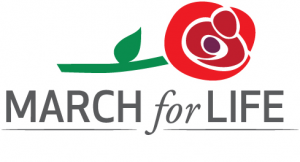“Now the Lord has spoken who formed me as his servant from the womb” (Isaiah 49:5). As we hear proclaimed so clearly in today’s first reading, each of us is God’s servant even while we are still in our mother’s womb. On this, the eve of the 47th anniversary of Roe v. Wade, allow me to offer some reflections on the tragedy that continues to misdirect our nation.
On 22 January 1973, the Supreme Court decided on not one, but two abortion cases: Roe v. Wade, challenging a Texas abortion law, and Doe v. Bolton, challenging a Georgia abortion law. Together, the cases struck down all state laws restricting abortion in the United States and replaced them with a national policy that effectively legalized abortion throughout all nine months of pregnancy. The results of these two decisions were significant. In Roe v. Wade, the Court made rulings regarding each of the trimesters of a typical pregnancy. In the first trimester, the Court ruled that states could not restrict or regulate abortion in any way – although the Court clarified in a later decision that states could require that abortions be performed by a licensed physician. During the second trimester, the Court ruled that states could regulate abortions only to the extent necessary to protect the “health” of the mother as broadly defined in Doe v. Bolton (see below). And, in the third trimester – after the unborn child becomes “viable” that is, able to survive outside the womb with or without medical support (which the Court determined occurred at approximately the beginning of the last three months of pregnancy – the Court declared that states could regulate or prohibit abortion, except when an abortion was performed to protect the life or health of the mother.
In the companion case of Doe v. Bolton, the Court defined “health” to include “all factors – physical, emotional, psychological, familial, and the woman’s age – relevant to the well-being of the patient.” Under this broad definition of “health,” any woman who is unhappy about being pregnant may have an abortion – even in the last months of pregnancy – to protect her “health.”
The fundamental position that Roe v. Wade asserted – that a woman has a constitutional right to abortion – was reaffirmed in 1992 in the Supreme Court’s Planned Parenthood of S.E. Pennsylvania v. Casey decision. This decision also suggested the possibility of life-protective laws after the baby’s viability. So, although the “right to abortion” position stands, the Court has also said that states may enact certain protective regulations, including some that have resulted in reducing the number of abortions.
Fortunately, recent developments in many states give us reason to hope that we will eventually convince the Supreme Court to provide substantial legal protection for all people, from conception to natural death. Most states now treat the killing of an unborn child as homicide if committed without his or her mother’s permission. And, one state after another is making it untenable for abortion clinics to remain open by requiring medical facilities nearby. In fact, over the past ten years, states have enacted over 500 laws restricting abortion practices. In addition to requiring nearby emergency medical care, these laws have called for parental notification or consent requirements for minors, brought limitations on public funding, mandated counseling designed to dissuade individuals from obtaining an abortion and required waiting periods before an abortion. As a result of these restrictions, abortions have decreased significantly over the past 10 years, from 1.21 million in 2008 to 862,320 in 2017 (that is the latest year for which there are reliable statistics). The number of facilities providing abortions has also dropped from 2,310 to 1,587. Currently, 89% of the counties in our country do not have clinics that provide abortions. As more and more of our youth become aware of the blatant contradictions in all of these abortion laws and procedures, it is my hope that all people in our country will open their minds and hearts and recognize that every single human being deserves equal protection. I suspect that, a hundred years from now, American history books will speak of the end of abortion in the same way as they now speak about the end of slavery; an evil that had to be removed from a civilized society.
We Catholics have the advantage of Divine instruction to inform our reason. This instruction comes to us most clearly in the gospels, where we hear Jesus declare: “I have come to give life, and give it in abundance!” We must continue to be the spokespeople for those who cannot speak for themselves, whether they are still in the womb, struggle with a disability or are trapped in a diseased body. God has given us life, and we must protect each and every human life until God calls it to himself! I thank those who will go on Friday to represent our parish as they join in the annual March for Life in Washington, DC, and I ask everyone to pray for an end to abortion in our country.


